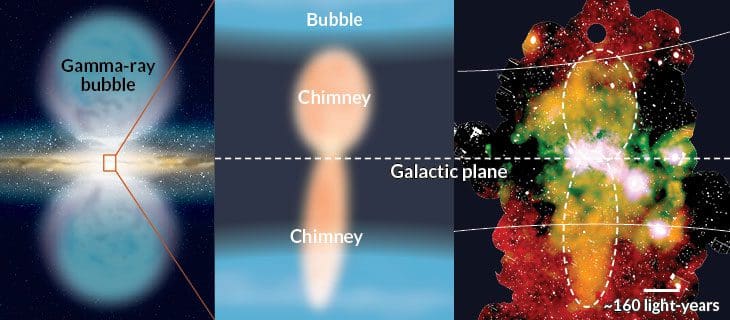Since its discovery in 2012, the mysterious “cocoon,” a luminous blob that seems to be within one of the massive gamma-ray emissions from the core of our galaxy nicknamed “Fermi bubbles,” has baffled researchers.
New findings released in Nature Astronomy demonstrate that the cocoon is created by gamma rays from fast-spinning extreme stars known as “millisecond pulsars” in our neighboring Sagittarius dwarf galaxy, which circles the Milky Way. While our findings explain the cocoon’s strange behavior, they throw doubt on the usefulness of seeking dark matter in the Gamma Ray emission it may produce. Fortunately, gamma radiation can not penetrate Earth’s atmosphere, which protects life here. Light particles with energy almost a million times greater than those of the photons our eyes can perceive.
Gamma Ray Solves The Mystery Bubbles
The Fermi Gamma Ray Space Telescope, a massive NASA project that has been in orbit for over 10 years, is the most advanced gamma-ray sensor currently in use. Because of Fermi’s sensitivity, we have learned some surprising things about our Milky Way and beyond.
In 2010, not long after Fermi’s debut, scientists discovered one of these surprises: something in the core of the Milky Way is blowing what seem to be two enormous, gamma-ray-emitting bubbles. These “Fermi bubbles” are utterly unexpected and take up 10% of the sky.
The galactic supermassive black hole is a leading contender for creating bubbles. The galactic nucleus, the source of the bubbles, is home to this monster, which is four million times more massive than our sun.
These enormous black holes are commonplace in the cores of galaxies. In certain cases, such black holes are constantly consuming nearby matter. In response to this feeding, they simultaneously emit massive “jets” that can be seen across all wavelengths of light.
One bubble had an extended brilliant area (the “cocoon”), whereas the other bubble had nothing like it.



